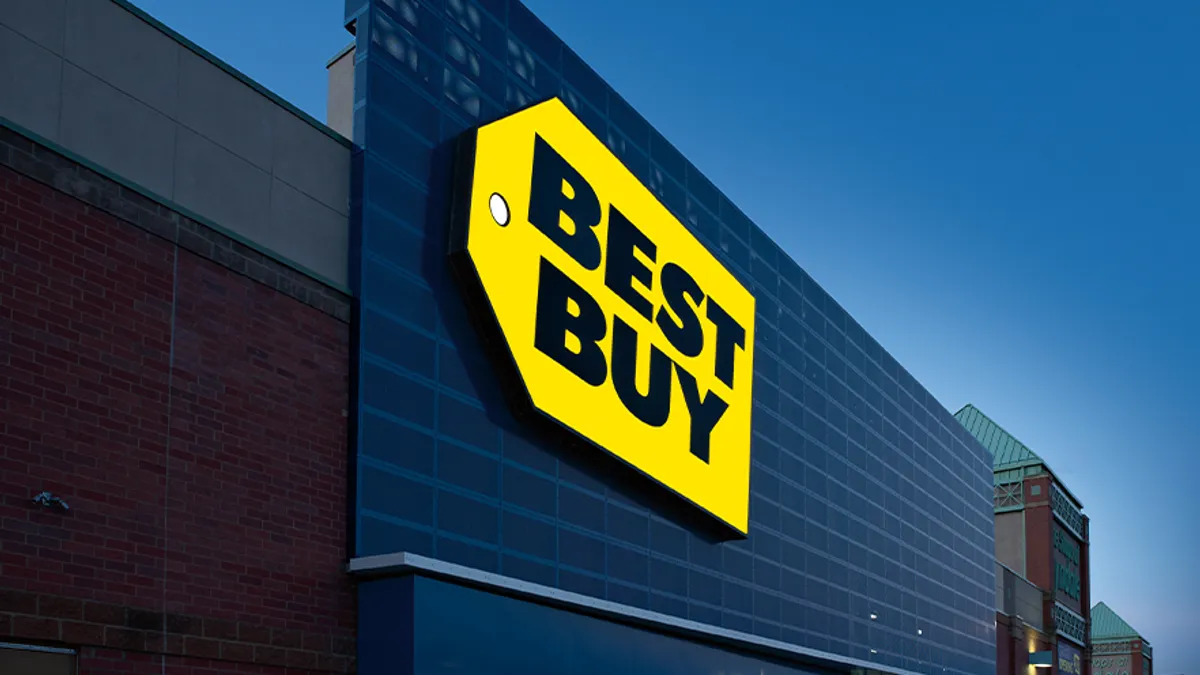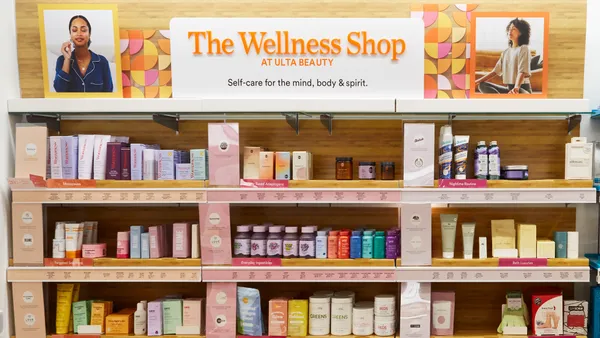Dive Brief:
- Amazon has claimed the top spot in Dealerscope's Top 101 Consumer Electronics Retailers list, pushing aside Best Buy, which had reigned since Dealerscope, a project of content and event firm CT Lab Global Media, began tracking annual consumer electronic retail sales in 2013.
- Amazon last year grew its consumer electronics sales by more than 18.5% or more than $5.3 billion, while Best Buy grew those sales 8.5%, according to the report. Best Buy and Best Buy Canada would rank higher than Amazon on this list if tracked as one entity, but Best Buy itself considers its units separate and Dealerscope counted them as such, according to the report.
- The category is thriving, although only a few players are left in the space, according to Dealerscope. In 2017, consumer sales in the U.S. and Canada rose 14% to $264.17 billion, up from $231.44 billion the previous year. There are now 91,446 stores operated by those on Dealerscope’s list, 929 more than the year before.
Dive Insight:
Consumers continue to seek out brick and mortar when it comes to shopping for consumer electronics. Those selling in that category that are opening stores include Dollar General (1,116 new locations last year), AutoZone (527), Dollar Tree (500) and Walgreens (282), Dealerscope reported. Even Amazon opened 10 new locations last year, not including Whole Foods, which sell Amazon Echo devices but aren’t technically counted by Dealerscope as consumer electronics stores.
Amazon’s move into the prime spot isn’t surprising, writes CT Lab Editorial Director Rob Stott on the Dealerscope blog. “In fact, we're probably a little shocked that this hadn't happened sooner,” he said. “But the narrative that this sea change helps tell is that even as major CE retail contenders like Best Buy and Walmart find ways to continue to grow in spite of Amazon, they simply cannot catch up or keep pace with what the online retailer has been able to accomplish.”
Best Buy and Walmart are brick-and-mortar stalwarts that have bucked the “retail apocalypse” narrative in recent years, but Amazon’s incursion into consumer electronics is simply inevitable, he said. Nearly two years ago Deutsche Bank analysts saw the writing on the wall, noting that Amazon accounted for a whopping 90% of the $5.6 billion growth in consumer electronics sales posted nationwide in 2015. Five years before, Amazon had a 6.2% share and ranked No. 4 on the list of top 100 U.S. electronics retailers. Consumer electronics sales grew 28% at Amazon in 2015, compared to same-store sales increases of 4.3% at Apple and 3.8% at Best Buy, those analysts said, predicting that Amazon was destined to eclipse Best Buy.
"The numbers are very clear. 60% of every incremental dollar being spent online in North America is gong to one company — Amazon. No matter what you sell, Amazon is coming for you," retail expert Doug Stephens, author of "Reengineering Retail: The Future of Selling in a Post-Digital World," told Retail Dive in an email.
The outlook isn't all dismal. In consumer electronics, Best Buy overall reigns supreme with 111.6 million average monthly visits, followed by Newegg with 45.8 million, according to recent research from digital market intelligence firm SimilarWeb. The most notable increase in traffic in that category was at Gamestop, which increased 19.5% year over year.
SimilarWeb's traffic numbers highlight Amazon's difficulty with discovery. "Their Achilles heel is that they’re not a fun shop," Stephens said. "Amazon is great when you know what you want, but not a great place to browse or to discover. And while their selections are vast, they don’t go very deep with product story, descriptions or imagery."
That gives a fighting chance to "retailers that can position themselves as true experts who provide entertaining places (online and offline) to discover and learn about a deep and expertly curated selection in a particular category, and provide expert product advisors or a chat service," he said.
That's exactly how Best Buy is fighting back, but others haven’t survived the heated competition. Circuit City, RadioShack and a host of smaller players in recent years have been felled by lower-cost warehouse stores and underpricing on the internet, which in turn has benefitted the survivors. Some $220.84 billion in consumer electronics sales was taken by the top 10 companies on Dealerscope’s list this year. That’s 83.6% of all retail sales in the category, “leaving just under $44 billion for the other 91 companies to divvy up amongst themselves,” Stott said.













